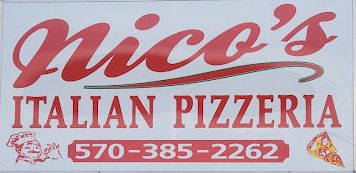Pennsylvania’s Importance as a Swing State
It has been a long standing common practice for presidential elections that the campaign’s focus revolves around swing states. In the 2000 election, president George W. Bush reached 271 votes in the electoral college after barely winning the popular vote in Florida by a mere 537 votes. Again in the 2004 election, Bush managed to squeeze another victory, this time through Ohio.
In recent presidential elections, Pennsylvania has been pivotal in reaching the 270 electoral votes needed to win the presidency. The amount of electoral votes each state has is determined by the state’s total number of senators and population, Pennsylvania being the 6th most populated state in the 2010 consensus and moving up to 5th as of the 2020 census.
Of the current 538 total electoral votes, Pennsylvania holds 19, making 7.04% of the 270 votes for president held by Pennsylvania. It may not seem like a lot, but when combined with the votes of the other forty nine states, it can and has determined the winner.
According to the Commonwealth of Pennsylvania, Donald J. Trump during the 2016 election won the popular vote in Pennsylvania by 44,292 votes, granting him 20 electoral votes of the 304 total he got. Joe Biden in 2020 won in Pennsylvania with a margin of 1.17%, again giving 20 votes.
For the past six elections (since 2000), four of those six times the elected president also won the popular vote in Pennsylvania.
Losing the Puerto Rican Vote Could’ve Meant Losing the Election
For the last few elections, many states have voted for the same party consistently, such as states like California, Texas and many midwestern states. With a grand majority of states being reliably one way or the other, an estimated total of electoral votes for both parties was already determined for the 2024 election before voting even happened.
However, seven states were expected to swing either way: Georgia, North Carolina, Pennsylvania, Michigan, Wisconsin, Nevada and Arizona. Gaining these states was absolutely critical to either party in order to reach 270 electoral votes.
Of the 51 votes left that the republican party needed, Pennsylvania held 19 (37%) of them. The necessity to win Pennsylvania for either party could not be understated.
Ever since Joe Biden dropped out of the presidential race in late July, it was a close race between republican nominee Donald Trump and democratic nominee Kamala Harris. Polls in swing states were nearly tied and constantly shifting, with either party winning by just a few percentage points each change.
According to a poll done by CBS News in Pennsylvania, both Harris and Trump were tied at 49% for choice of president. The race couldn’t possibly have been closer.
On Sunday, Oct. 27, Trump’s campaign held a rally at Madison Square Garden, NY. Numerous speakers took the podium during the event, including comedian Tony Hinchcliffe.
Hinchcliffe made multiple jokes throughout his time on stage, targeting different groups of people; however, one especially stood out. “There’s a lot going on. Like, I don’t know if you know this, but there’s literally a floating island of garbage in the middle of the ocean right now. I think it’s called Puerto Rico,” Hinchcliffe said.
This joke was almost immediately hit with backlash from voters in general, although the Puerto Rican community especially voiced their anger and displeasure towards Trump’s campaign.
Trump losing Puerto Rican voters from this comment could’ve caused him to lose Pennsylvania.
In Pennsylvania, there is a Puerto Rican population of about 472,213 people. That is over ten times the amount of votes that Trump won Pennsylvania by in 2016. If even just a third of that population is eligible to vote (157,404 people), if they vote Democratic with a fifty five-forty five split, it is still larger than Trump’s previous win margin.
With the joke being made only just a week before election day and with mail in ballots already being sent out, there wasn’t time to win back Puerto Rican voters if any were lost. Although, as election day came and went, it became clear that Trump’s foothold on these voters was not greatly damaged. According to voter surveys from the Associated Press, Trump won 43% of the Latino vote.
Despite the fact that Trump won the popular vote in Pennsylvania, the uncertainty in the days leading up to the election was considerable, and no one knew for sure what just might happen. The 2024 election will always be remembered as one in which even the smallest misfortune could tip the scales.

































